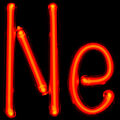Template:Selected anniversaries/December 3: Difference between revisions
No edit summary |
No edit summary |
||
| Line 31: | Line 31: | ||
File:John Backus.jpg|link=John Backus (nonfiction)|1924: Mathematician and computer scientist [[John Backus (nonfiction)|John Backus]] born. He will invent the Backus–Naur form (BNF) notation to define formal language syntax. | File:John Backus.jpg|link=John Backus (nonfiction)|1924: Mathematician and computer scientist [[John Backus (nonfiction)|John Backus]] born. He will invent the Backus–Naur form (BNF) notation to define formal language syntax. | ||
||Konrad Jörgens (3 December 1926) was a German mathematician. He made important contributions to mathematical physics, in particular to the foundations of quantum mechanics, and to the theory of partial differential equations and integral operators. | |||
||1933 – Paul J. Crutzen, Dutch chemist and engineer, Nobel Prize laureate | ||1933 – Paul J. Crutzen, Dutch chemist and engineer, Nobel Prize laureate | ||
Revision as of 18:50, 28 November 2017
1616: Mathematician and cryptographer John Wallis born. He will serve as chief cryptographer for Parliament and, later, the royal court.
1909: Electrical engineers John Havelock and Nikolai Tesla invent new data transmission protocols based on the work of mathematician and cryptographer John Wallis.
1910: Modern neon lighting is first demonstrated by Georges Claude at the Paris Motor Show.
1911: "Fightin'" Bert Russell agrees to fight three rounds of bare-knuckled boxing at World Peace Conference.
1924: Mathematician and computer scientist John Backus born. He will invent the Backus–Naur form (BNF) notation to define formal language syntax.
1965: Mathematician and crime-fighter Edward Lorenz publishes new class of Gnomon algorithm functions which compute and prevent crimes against mathematical constants.





